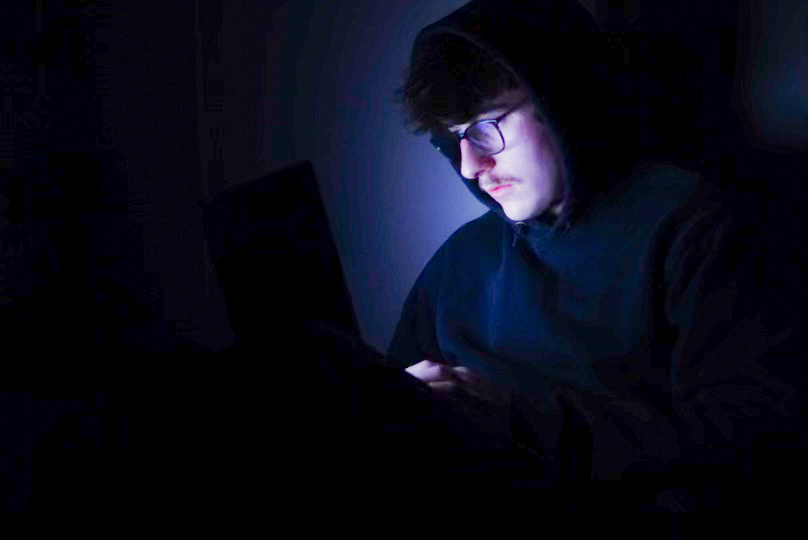Intentional Wellness: How Blue Light Affects Your Everyday Life
It’s 1:00 a.m. You’re laying in bed, finishing your routine, scrolling through TikTok or Instagram as your eyes begin to close. At last, it’s time to give your body what it deserves: a good night’s rest. But how good is this rest really going to be?
You may not be getting the rest that you need due to your body’s recent exposure to blue light. Blue light makes up one-third of the visible light spectrum — what the human eye can see. This light is emitted from the sun but also from the devices that we are so attached to. Our society has learned to rely on technology in our day-to-day lives, and as college students, we are constantly looking at computer screens or staring at our phones. But here’s an incentive to start thinking about the time you are spending on your devices: constant exposure to blue light undoubtedly harms the quality of sleep and overall health, therefore hindering students’ performance in the classroom and on the field.
We are exposed to blue light constantly throughout the day. The biggest sources of this light include sunlight, fluorescent light, LED TVs, computer monitors and smartphones. With the developments in modern technology, screen time has increased over the last 20 years. The average American spends approximately 7 hours on a screen daily, and a study by Conrad Safranek in “The Stanford Daily” shows that during a regular week of classes, college students spend an average of 50.2 percent of their waking day looking at a screen. The thing is, our eyes can’t block out all of this blue light, and constant exposure over time can cause many health issues. This includes eye-related health issues such as age-related macular degeneration, digital eye strain and retinal damage. Since blue-light-emitting technology is relatively new, there are very few medical studies on long-term problems like chronic insomnia, metabolic diseases and eye diseases, although these issues may reveal themselves in the future as a result of excessive blue light exposure.
Furthermore, blue light harms your quality of sleep, especially when you are exposing your body to it up until you fall asleep. It suppresses the secretion of melatonin, a hormone that helps with sleep and the timing of your circadian rhythms. Due to this blockage of melatonin, your body cannot properly prepare itself for sleep, meaning it will take longer to fall asleep. Without a sufficient amount of sleep, cognitive abilities are hindered, which can harm school performance. In addition, student-athletes may experience decreased reaction time, quicker exhaustion, and a higher risk for injury. This demonstrates how extensive exposure to blue light can affect a student’s academic and athletic performance.
Of course, some blue light exposure is important for our brain chemistry and overall health, so constantly blocking sources of this light could also take its toll on your body. Blue light has been shown to boost attentiveness, help you feel more awake, improve memory, improve cognition, and elevate mood, but overexposure remains an issue. According to Kinga Gruzewska-Piotrowska’s article published in “Quality in Sport,” it was concluded that “91.3 percent of respondents know what blue light is, but only 22.1 percent use protection against it before sleep.” So what can we do to decrease our exposure to blue light and improve our long-term health? For starters, utilize the night mode that is included on most devices, which can prevent much of the blue light from reaching your eyes without affecting the visibility of the display. Think about combining this setting with a blue light-filtering screen protector. According to an article from the NIH by Andrew Smith, using one of these screen protectors in addition to night mode can decrease blue light intensity by 81.2 percent to 86.5 percent. Furthermore, consider purchasing a pair of blue light glasses. Wearing these glasses during the day and while using devices can help people have more restful sleep, as they reduce the negative effects of blue light by 10 percent to 23 percent. What’s most important is to find something that works for you. Prioritize your sleep, performance, and your health by protecting yourself against substantial amounts of blue light.
In conclusion, decreasing your exposure to blue light throughout the day will have positive effects on your sleep, performance and health. You can do this by finding convenient and simple ways to reduce the amount of blue light you are exposed to. Taking this small step will introduce you to the multitude of ways that you can begin to build wellness into your daily routine.



